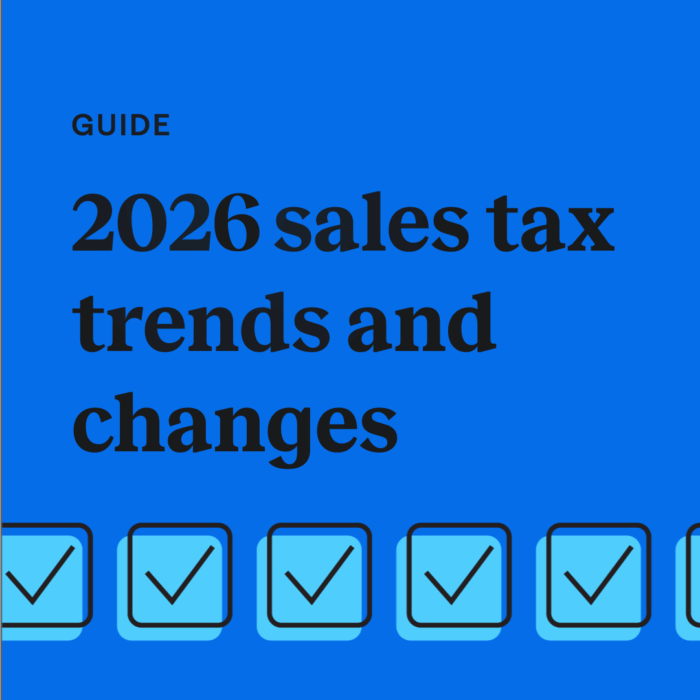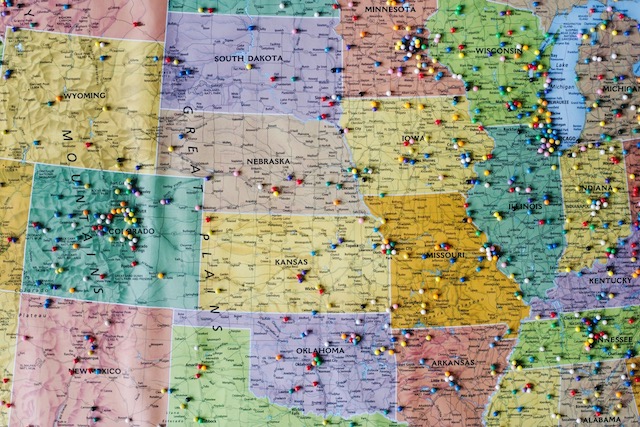The hidden costs of manual sales tax compliance
by October 28, 2025
Businesses focused on streamlining their budget to save money may prefer to manually manage each aspect of daily operations, including sales tax accounting and compliance. However, if your internal accounting or finance team is tasked with managing sales tax filing and remittance, you could face a multitude of challenges. The hidden costs of manual sales tax compliance may surprise you.
From higher hourly costs to an increased error risk, here’s what all companies must consider when utilizing manual processes to manage sales tax compliance.
The burden of manual sales tax compliance
Sales tax compliance requires an understanding of the unique sales tax laws in each state. For this reason, manually managing sales tax calculations, filings, and remittance quickly becomes a daunting task.
Companies that sell their goods or services in multiple states must understand the economic nexus thresholds that require them to collect and remit sales tax from buyers in each state. Economic nexus thresholds are unique to each state, and are either based on revenue or number of transactions (or both).
Businesses that fail to monitor total sales across states may not know when their sales volume has triggered a state’s nexus requirement. This can result in noncompliance, potentially leading to fines, penalties, and reputational concerns
Yet, the burden of manually managing sales tax also places a unique economic pressure on businesses beyond the financial arrears related to noncompliance. The time required of their team to understand laws and guidelines, manage all the details, and file and compute tax payments also adds to the cost.
Hourly labor costs
Business owners and managers may assume that keeping sales tax processes as a manual internal process makes financial sense. However, the assumed savings may actually be a budget drain.
The hourly labor costs for sales tax compliance are not simply focused on collecting payments, remitting payments, and filing the return. The team must also:
- Monitor economic nexus thresholds in each state where they make a sale
- Monitor and decipher tax legislation and update rates accordingly
- Regularly assess total sales in all states to identify when the company hits nexus
- Assign the correct sales tax rate to each sale in every state
- Collect sales tax on all applicable sales
- Calculate quarterly or annual sales tax payments for each state
- File sales tax returns and remit payment
Each step in this process equates to billable hours for an employee. In some situations, manual sales tax processes may lead to overtime that further bumps up the operating costs. Businesses that manage tax compliance in just 15 states will spend more than 20 hours per month on processes; businesses with nexus in 46 states will accrue nearly 70 hours each month just managing tax compliance.
The impact of human error on financial health
The time burden related to sales tax compliance for businesses with high sales volumes may weigh heavily on employees who must manage every step of this process. Accounting teams or finance leaders may feel rushed to ensure that they complete every step on time, and the research process related to understanding economic nexus thresholds in each state, as well as staying on top of state tax changes, adds up..
When employees feel stressed, overworked, or rushed, mistakes happen. Unfortunately, the impact of human error on sales tax compliance can have far-reaching complications and consequences.
Filing a late return, miscalculating sales tax, or failing to identify that the business holds nexus in a state (and is obligated to register for a sales tax permit and remit tax) can lead to penalties, accrued interest, an audit, and other financial issues.
Operational inefficiencies in manual sales tax compliance
Manually managing sales tax compliance requires that businesses streamline internal processes to ensure efficiency. However, when high sales volumes lead to businesses holding nexus in many states, even the most streamlined strategies can begin to unravel.
Increased risk of audit liabilities
When businesses manage sales tax compliance manually, simple accounting errors can lead to miscalculating tax payments or a failure to identify that the business has met a state’s economic threshold.
While the team may miss these details, the state’s taxing authority will not overlook them. Sales tax mistakes can lead to an audit, which places the financial details of the company under scrutiny. Auditors will comb through all receipts and financial records in an attempt to collect what is due to the state. A sales tax audit may lead to additional tax debts, and the company may also need to hire a tax professional to guide them and represent them during the audit. For any business, a sales tax audit isn’t just stressful; it can be financially draining and daunting.
Missed revenue opportunities
Underpaying sales tax, failing to file a return, and other omissions can potentially threaten a company’s financial bottom line. In addition, manually calculating sales tax can also lead to missed revenue opportunities related to overpayments.
When companies manage their sales tax processes manually, they may unknowingly pay a much higher opportunity cost for this decision. Errors may also lead to a company paying sales tax in a state where they don’t have nexus.
Fines, penalties, miscalculations, and other tax errors all squeeze the profit margin. Companies must understand these total costs and identify them as missed revenue.
How manual sales tax compliance impacts remote sellers and businesses
All businesses and remote sellers must understand their sales tax responsibilities in each state where they sell goods or taxable services. However, the burden of tax compliance weighs heavily on large businesses with sales in multiple states.
These businesses aren’t simply managing a few sales tax nuances. Instead, they must manage and comply with sales tax laws in every single state where they have nexus. This requires extreme accountability and diligence for those who insist on managing tax compliance manually.
Complexities when ensuring multi-state compliance
TaxJar offers businesses free online sales tax guides for every state. These guides highlight sales tax nexus thresholds, the state’s sales tax rate, goods and services that are considered taxable, how to apply for a sales tax permit, and the steps to collect and remit sales tax in the state.
While TaxJar’s guides offer basic sales tax information for businesses, it’s the responsibility of each business to understand their unique sales tax responsibilities to ensure compliance in every state. The complexities of state tax laws require that every business regularly monitor their total sales in every state, allowing them to identify when they meet the state’s economic threshold.In addition, some states don’t charge standard sales tax. Hawaii, for example, assesses a General Excise Tax (GET), which is a tax for doing business in the state.
Navigating audit liabilities in non-registered states
Failing to collect and remit sales tax when a business meets economic thresholds in the state can lead to an audit. Again, it’s the responsibility of every business to understand the sales tax laws in every state where they sell goods or taxable services. Noncompliance has many financial and legal consequences.
Unfortunately, a business may only find out that they have a tax obligation in a particular state when they receive a notice of an audit. When businesses rely on manual processes for calculating and managing sales tax, these processes may not account for the research time needed to understand and identify the nuanced requirements of state tax laws and economic nexus thresholds.
Advice from sales tax professionals
What are the risks of managing sales tax compliance manually? One of TaxJar’s filing experts weighs in on the costs and potential liabilities (and headaches) of manual tax compliance to help businesses understand the potential burden on the financial bottom line:
“There are over 13,000 tax jurisdictions in the US, each with its own unique tax laws and rates. Manually managing compliance wastes an incredible amount of time for businesses. It’s helpful to think of sales tax software as an investment. Building an in-house sales tax function is not feasible, when you could easily outsource compliance to make sure you are filing accurately.”
The benefits of sales tax automation
Manually managing sales tax processes can lead to higher operational costs, time inefficiency, human errors that lead to potentially higher costs, and, unfortunately, the risk of a sales tax audit (related to these errors). Streamlining sales tax processes with sales tax automation software like TaxJar can help mitigate errors and financial losses while also saving time and stress.
Minimizing human error
TaxJar automates every step in the sales tax process, streamlining nuanced and tedious tasks and ensuring your business is set up for tax compliance success.
Automating sales tax processes means that there is no guesswork and little risk of human error related to calculations, tax rates, filing, or economic nexus monitoring.
Streamlining time and resource management
With TaxJar, finance and accounting teams can spend their time on other crucial operational daily tasks instead of managing the details of sales tax compliance, resulting in a more streamlined and productive team. TaxJar can help you register for a sales tax permit, calculate sales tax rates, collect sales tax, alert you when you are nearing nexus (or have hit nexus) in a state, and file a sales tax return. TaxJar works for you, ensuring your business always stays up-to-date on every sales tax detail.
TaxJar works seamlessly with popular online sales platforms. TaxJar integrates with Amazon, Square, Shopify, Etsy, and more to ensure that sales tax is calculated per unique state guidelines. In addition, TaxJar customers can create a custom API workflow.
Reducing potential audit risks and liabilities
Automating sales tax compliance offers peace of mind for businesses that need to manage sales tax obligations in many states. While sales tax automation software doesn’t eradicate the risk of an audit, automating complex sales tax processes helps reduce this risk and keeps you organized so you are prepared if you are audited. TaxJar helps businesses mitigate errors related to tax collection that may trigger an audit, including monitoring economic nexus thresholds, sales tax reporting, and filing and remitting sales tax.
Ready to streamline your business’ sales tax compliance? Start a free trial with TaxJar today.








